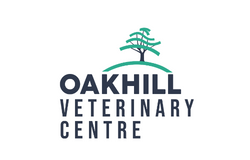COW TRACKS
With turnout time upon us it is a good time to have a look at your cow tracks and ensure that they are in good repair to benefit both you and your cows.
Advantages of a cow track
A good cow track will ensure that your herd can move safely around your farm as well as improving cow flow, reducing lameness caused by claw damage, reducing field poaching, and improving cow cleanliness and udder hygiene. Effective cow tracks can even extend your grazing season by providing better field access as well as saving you money on treatments arising from issues with foot and udder health.
THE IDEAL COW TRACK
When installing or re-designing a cow track it is important to take into consideration cow comfort. The ideal cow track will have the below features:
- Width: Dependant on your herd size the minimum width of the surfaced track should be between 4 metres (for herds of 200 cows) and 7 metres (for herds of 500 cows).
- Layout: The track should run the shortest route from A to B. Not only will this save on track materials, but also the energy used by the cows that can be available for milk production instead. Avoid sharp turns, very steep sections (gradients ideal no more than 8%), and bottlenecks.
- Surface: Should be free draining and quick drying, free of sharp grit and large stones as well as any material that could get trapped between claws. It should have good underfoot grip but not be overly abrasive. Ideally it should be cushioned for cow comfort. Some examples of cow track materials include oolitic limestone, sandstone, chalk, woodchips, or crushed stone or rubble stabilised with cement.
HOW TO MOVE YOUR COWS ON THE TRACK
Installing an effective track is vital, but it is just as important to keep in mind how cows want to move on a cow track. Cows need space to move their heads freely to allow them to place their feet safely and avoid more dominant cows, so ensure you give your cows space and do not force them to compact together.
As well as space, they also need time to rearrange themselves once they enter the parlour. The order they walk along the track is not necessarily the order in which they are milked. Dominant cows walk at the front of the herd and will not be over-taken by less dominant members of the herd, this means animals at the back of the group are under more pressure and tend to bunch at the back so avoid putting pressure on cows at the rear of the herd. Cows want to move forwards, only less dominant cows and heifers reverse when under pressure, you can avoid this backwards movement by increasing the distance between the herdsman and the herd when on the track.
DON’T FORGET THE NECESSARY PERMISSIONS!
If your track runs near a watercourse, and depending which material you choose, you may need to seek advice from the Environment Agency or Internal Drainage Board. Permissions from the landowner and local authority should be sought. Areas of historical significance or wildlife interest should be avoided.
